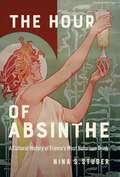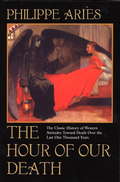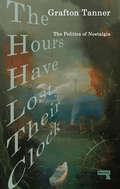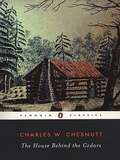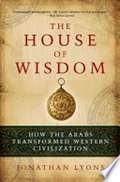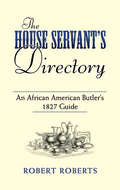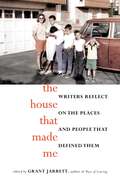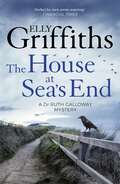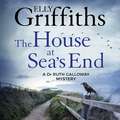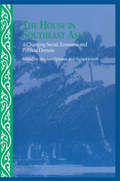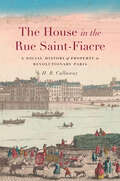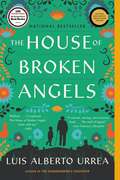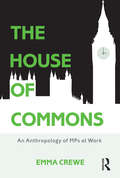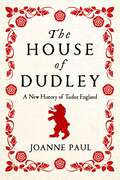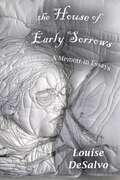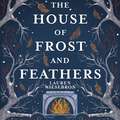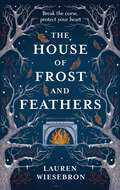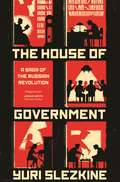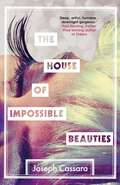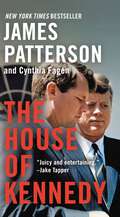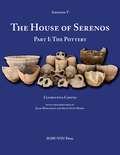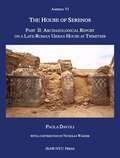- Table View
- List View
The Hour of Absinthe: A Cultural History of France's Most Notorious Drink (Intoxicating Histories #11)
by Nina S. StuderAt the height of its popularity in the late nineteenth century, absinthe reigned in the bars, cafés, and restaurants of France and its colonial empire. Yet by the time it was banned in 1915, the famous green fairy had become the green peril, feared for its connection with declining birth rates and its apparent capacity to induce degeneration, madness, and murderous rage in its consumers.As one of history’s most notorious drinks, absinthe has been the subject of myth, scandal, and controversy. The Hour of Absinthe explores how this mythologizing led to the creation and fabrication of a vast modern folklore while key historical events, crucial to understanding the story of absinthe, have been neglected or unreported. Mystique and moralizing both arose from the spirit’s relationship with empire. Some claim that French soldiers were given daily absinthe rations during France’s military conquest of Algeria to protect them against heat, diseases, and contaminated water. In fact, the overenthusiastic adoption of the drink by these soldiers, and subsequently by French settlers, was perceived as a threat to France’s colonial ambitions – an anxiety that migrated into French medicine.Providing keen insight into how local cultural narratives about absinthe shaped what quickly became a global reputation, Nina Studer provides a panoptic view of the French Empire’s influence on absinthe’s spectacular fall from grace.
The Hour of Our Death
by Philippe AriesThis remarkable book--the fruit of almost two decades of study--traces in compelling fashion the changes in Western attitudes toward death and dying from the earliest Christian times to the present day. A truly landmark study, The Hour of Our Death reveals a pattern of gradually developing evolutionary stages in our perceptions of life in relation to death, each stage representing a virtual redefinition of human nature.Starting at the very foundations of Western culture, the eminent historian Phillipe Ariès shows how, from Graeco-Roman times through the first ten centuries of the Common Era, death was too common to be frightening; each life was quietly subordinated to the community, which paid its respects and then moved on. Ariès identifies the first major shift in attitude with the turn of the eleventh century when a sense of individuality began to rise and with it, profound consequences: death no longer meant merely the weakening of community, but rather the destruction of self. Hence the growing fear of the afterlife, new conceptions of the Last Judgment, and the first attempts (by Masses and other rituals) to guarantee a better life in the next world. In the 1500s attention shifted from the demise of the self to that of the loved one (as family supplants community), and by the nineteenth century death comes to be viewed as simply a staging post toward reunion in the hereafter. Finally, Ariès shows why death has become such an unendurable truth in our own century--how it has been nearly banished from our daily lives--and points out what may be done to "re-tame" this secret terror.The richness of Ariès's source material and investigative work is breathtaking. While exploring everything from churches, religious rituals, and graveyards (with their often macabre headstones and monuments), to wills and testaments, love letters, literature, paintings, diaries, town plans, crime and sanitation reports, and grave robbing complaints, Aries ranges across Europe to Russia on the one hand and to England and America on the other. As he sorts out the tangled mysteries of our accumulated terrors and beliefs, we come to understand the history--indeed the pathology--of our intellectual and psychological tensions in the face of death.
The Hourglass Solution: A Boomer's Guide to the Rest of Your Life
by Jeff Johnson Paula FormanSeventy-five million baby boomers are finding themselves bound by habits and pursuits instigated many years ago-and for a large percentage of those boomers, significant aspects of their lives no longer satisfy. But by joining revolutionary insight to highly proprietary prescriptive advice, The Hourglass Solution provides a proactive and pragmatic way to lead a better life after 50. Johnson and Forman evaluate the life narrative through the lens of an hourglass-proposing that those in early adulthood are at the top of the hourglass, able to select from many options, while those in middle age are in the hourglass’s neck, constrained by the choices they made earlier in their lives. The Hourglass Solution explains how those approaching their fifties (and beyond) can still find a wealth of opportunity by recognizing and pursuing new directions, free from the restrictions imposed by an earlier choice. Like Gail Sheehy’s Passages before it, The Hourglass Solution will enlighten and inspire a generation of readers to regain control over their lives and well-being.
The Hours Have Lost Their Clock: The Politics of Nostalgia
by Grafton TannerThe Hours Have Lost Their Clock charts the rise of nostalgia in an era knocked out of time.In The Hours Have Lost Their Clock, Grafton Tanner charts the rise of nostalgia in an era knocked out of time. Nostalgia is the defining emotion of our age. Political leaders promise a return to yesteryear. Old movies are remade and cancelled series are rebooted. Veterans reenact past wars, while the displaced across the world long for home. But who is behind this collective ache for a home in the past? Do we need to eliminate nostalgia, or just cultivate it better? And what is at stake if we make the wrong choice? Moving from the fight over Confederate monuments to the birth of homeland security to the mourning of species extinction, Grafton Tanner traces nostalgia&’s ascent in the twenty-first century, revealing its power as both a consequence of our unstable time and a defense against it. With little faith in a future of climate change and economic anxiety, many have turned to nostalgia to weather the present, while powerful elites exploit it for their own gain. An exploration into the politics of loss and yearning, The Hours Have Lost Their Clock is an urgent call to take nostalgia seriously. The very future depends on it.
The House Behind the Cedars
by Charles W. Chesnutt Donald B. GibsonAn early masterwork among American literary treatments of miscegenation, Chesnutt's story is of two young African Americans who decide to pass for white in order to claim their share of the American dream.
The House Of Wisdom: How The Arabs Transformed Western Civilization
by Jonathan LyonsFor centuries following the fall of Rome, Western Europe was a benighted backwater, a world of subsistence farming, minimal literacy, and violent conflict. Meanwhile Arab culture was thriving, dazzling those Europeans fortunate enough to visit cities like Baghdad or Antioch. There, philosophers, mathematicians, and astronomers were steadily advancing the frontiers of knowledge, as well as keeping alive the works of Plato and Aristotle. When the best libraries in Europe held several dozen books, Baghdad's great library, The House of Wisdom, housed four hundred thousand. Jonathan Lyons shows just how much "Western" ideas owe to the Golden Age of Arab civilization. Even while their countrymen waged bloody Crusades against Muslims, a handful of intrepid Christian scholars, hungry for knowledge, traveled East and returned with priceless jewels of science, medicine, and philosophy that laid the foundation for the Renaissance. In this brilliant, evocative book Jonathan Lyons reveals the story of how Europe drank from the well of Muslim learning.
The House Servant's Directory: An African American Butler's 1827 Guide (American Antiquarian Cookbook Collection)
by Robert Roberts"In order to get through your work in proper time, you should make it your chief study to rise early in the morning; for an hour before the family rises is worth more to you than two after they are up."So begins Robert Roberts' The House Servant's Directory, first published in 1827 and the standard for household management for decades afterward. A classic survey of work, home life, and race relations in early America, the book was the result of many years of Roberts' personal and professional experiences. One of the first books written by an African-American and published by a commercial press, this manual for butlers and waiters offers keen insight into the social milieu, hierarchy, and maintenance of the antebellum manor.As a servant to a prominent New England family, Roberts provided valuable insights into what was expected of domestic servants. His book contains an abundance of instructions for successfully completing household chores as well as suggestions for properly cleaning furniture and clothing; and for buying, preparing, and serving food and drink for dinner parties of all sizes (much of which is still useful information today). The text also contains suggestions for arranging servants' work routines, and advice to heads of families on how best to manage their domestic help -- extraordinary recommendations for master-servant relationships and highly unusual for the time.Among the most famous of etiquette books to provide instruction on proper behavior for domestic servants in the early nineteenth century, Roberts' Directory remains a critical primary source in sociology and African-American history.
The House That Made Me: Writers Reflect on the Places and People that Defined Them
by Grant JarrettHome—the place where we were born, where we learned our first lessons, where family was defined. The very notion evokes powerful feelings, feelings as individual as our fingerprints, as enduring as the universe and as inescapable as gravity. In this candid, evocative collection of essays, a diverse group of acclaimed authors reflects on the diverse homes, neighborhoods, and experiences that helped shape them—using Google Earth software to revisit the location in the process. Moving and life-affirming, this poignant anthology gives fresh insight into the concept of Home. This anthology includes 19 essays by an array of diverse award-winning authors, including: • Tim Johnston, author of Descent and winner of the O. Henry Prize, the New Letters Award for Writers, and the Gival Press Short Story Award • Laura Miller, culture columnist at Slate and co-founder of Salon.com • Porochista Khakpour, author of The Last Illusion and recipient of the 2012 National Endowment for the Arts (NEA) Literature Fellowship in Creative Writing (Prose) • Lee Upton, author of The Tao of Humiliation, named one of &“Best Books of 2014&” by Kirkus Reviews • Pamela Erens, author of the critically acclaimed novel The Virgins • Jeffery Renard Allen, author of Song of the Shank and winner of the Ernest J. Gaines Award for Literary Excellence and the Whiting Writer's Award
The House That Sugarcane Built: The Louisiana Burguières
by Donna McGee OnebaneThe House That Sugarcane Built tells the saga of Jules M. Burguières Sr. and five generations of Louisianans who, after the Civil War, established a sugar empire that has survived into the present. When twenty-seven-year-old Parisian immigrant Eugène D. Burguières landed at the Port of New Orleans in 1831, one of the oldest Louisiana dynasties began. Seen through the lens of one family, this book traces the Burguières from seventeenth-century France, to nineteenth- century New Orleans and rural south Louisiana and into the twenty-first century. It is also a rich portrait of an American region that has retained its vibrant French culture. As the sweeping narrative of the clan unfolds, so does the story of their family-owned sugar business, the J. M. Burguières Company, as it plays a pivotal role in the expansion of the sugar industry in Louisiana, Florida, and Cuba. The French Burguières were visionaries who knew the value of land and its bountiful resources. The fertile soil along the bayous and wetlands of south Louisiana bestowed on them an abundance of sugarcane above its surface, and salt, oil, and gas beneath. Ever in pursuit of land, the Burguières expanded their holdings to include the vast swamps of the Florida Everglades; then, in 2004, they turned their sights to cattle ranches on the great frontier of west Texas. Finally, integral to the story are the complex dynamics and tensions inherent in this family-owned company, revealing both failures and victories in its history of more than 135 years. The J. M. Burguières Company's survival has depended upon each generation safeguarding and nourishing a legacy for the next.
The House at Sea's End: The Dr Ruth Galloway Mysteries 3 (The Dr Ruth Galloway Mysteries #3)
by Elly GriffithsThe shadow of the Second World War looms dark over this chilling mystery starring forensic archaeologist Dr Ruth Galloway. Some buried secrets shouldn't be uncovered.'Brilliant on the eerie landscape of the Norfolk coast' Sunday TimesDr Ruth Galloway is called in by a team of archaeologists investigating coastal erosion on the north Norfolk coast, when they unearth six bodies buried at the foot of a cliff. They seem to have been there a very long time. Ruth must help discover how long, and how on earth they got there. Ruth and DCI Nelson are drawn together once more to unravel the past. Tests reveal that the bodies have lain, preserved in the sand, for sixty years. The mystery of their deaths stretches back to the Second World War, a time when Great Britain was threatened by invasion. Ruth thought she knew the history of Norfolk - she's about to find out just how wrong she was, and how far someone will go to keep their secrets buried.
The House at Sea's End: The Dr Ruth Galloway Mysteries 3 (The Dr Ruth Galloway Mysteries #3)
by Elly GriffithsWNNER OF THE 2016 CWA DAGGER IN THE LIBRARY. The shadow of the Second World War looms dark over the third chilling mystery for Dr Ruth Galloway. Some buried secrets shouldn't be uncovered.'A melancholy setting, an eerie discovery, a lone investigator... perfect for the long winter evening' Financial TimesDr Ruth Galloway is called in by a team of archaeologists investigating coastal erosion on the north Norfolk coast, when they unearth six bodies buried at the foot of a cliff. They seem to have been there a very long time. Ruth must help discover how long, and how on earth they got there. Ruth and DCI Nelson are drawn together once more to unravel the past. Tests reveal that the bodies have lain, preserved in the sand, for sixty years. The mystery of their deaths stretches back to the Second World War, a time when Great Britain was threatened by invasion. Ruth thought she knew the history of Norfolk - she's about to find out just how wrong she was, and how far someone will go to keep their secrets buried.
The House in Southeast Asia: A Changing Social, Economic and Political Domain (Nias Studies In Asian Topics Ser. #No.28)
by Stephen Sparkes Signe HowellExplores the concept of 'house' in the context of Levi-Strauss' idea of the house as a link between kinship-based societies and class societies, developing this further into an examination of a conjuncture of architecture, people and symbolism.
The House in the Rue Saint-Fiacre: A Social History of Property in Revolutionary Paris (Harvard Historical Studies)
by H. B. CallawayA bold account of property reform during the French Revolution, arguing that the lofty democratic ideals enshrined by revolutionary leaders were rarely secured in practice—with lasting consequences.Property reform was at the heart of the French Revolution. As lawmakers proclaimed at the time, and as historians have long echoed, the Revolution created modern property rights. Under the new regime, property was redefined as an individual right to which all citizens were entitled. Yet as the state seized assets and prepared them for sale, administrators quickly found that realizing the dream of democratic property rights was far more complicated than simply rewriting laws.H. B. Callaway sifts through records on Parisian émigrés who fled the country during the Revolution, leaving behind property that the state tried to confiscate. Immediately, officials faced difficult questions about what constituted property, how to prove ownership, and how to navigate the complexities of credit arrangements and family lineage. Mothers fought to protect the inheritances of their children, tenants angled to avoid rent payments, and creditors sought their dues. In attempting to execute policy, administrators regularly exercised their own judgment on the validity of claims. Their records reveal far more continuity between the Old Regime and revolutionary practices than the law proclaimed. Property ownership continued to depend on webs of connections beyond the citizen-state relationship, reinforced by customary law and inheritance traditions. The resulting property system was a product of contingent, on-the-ground negotiations as much as revolutionary law.The House in the Rue Saint-Fiacre takes stock of the contradictions on which modern property rights were founded. As Callaway shows, the property confiscations of Parisian émigrés are a powerful, clarifying lens on the idea of ownership even as it exists today.
The House of Broken Angels
by Luis Alberto UrreaIn his final days, beloved and ailing patriarch Miguel Angel de La Cruz, affectionately called Big Angel, has summoned his entire clan for one last legendary birthday party. But as the party approaches, his mother, nearly one hundred, dies, transforming the weekend into a farewell doubleheader. Among the guests is Big Angel's half brother, known as Little Angel, who must reckon with the truth that although he shares a father with his siblings, he has not, as a half gringo, shared a life. <p><p> Across two bittersweet days in their San Diego neighborhood, the revelers mingle among the palm trees and cacti, celebrating the lives of Big Angel and his mother, and recounting the many inspiring tales that have passed into family lore, the acts both ordinary and heroic that brought these citizens to a fraught and sublime country and allowed them to flourish in the land they have come to call home. <p> Teeming with brilliance and humor, authentic at every turn, The House of Broken Angels is Luis Alberto Urrea at his best, and cements his reputation as a storyteller of the first rank.
The House of Commons: An Anthropology of MPs at Work
by Emma CreweThe House of Commons is one of Britain's mysterious institutions: constantly in the news yet always opaque. In this ground-breaking anthropological study of the world’s most famous parliament, Emma Crewe reveals the hidden mechanisms of parliamentary democracy.Examining the work of Members of Parliament – including neglected areas such as constituencies and committees – this book provides unique insights into the actual lives and working relationships of parliamentarians. 'Why do the public loathe politicians but often love their own MP?' the author asks. The antagonistic façade of politics irritates the public who tend to be unaware that, backstage, democracy relies on MPs consulting, compromising and cooperating across political parties far more than is publicly admitted. As the book shows, this is only one of myriad contradictions in the labyrinths of power. Based on unprecedented access and two years of interviews and research in the Palace of Westminster and MPs’ constituencies, The House of Commons: An Anthropology of MPs at Work challenges the existing scholarship on political institutions and party politics. Moving beyond the narrow confines of rational choice theory and new institutionalism, Emma Crewe presents a radical alternative to the study of British politics by demonstrating that all of its processes hinge on culture, ritual and social relations. A must-read for anyone interested in political anthropology, politics, or the Westminster model.
The House of Condulmer: The Rise and Decline of a Venetian Family in the Century of the Black Death (The Middle Ages Series)
by Alan M. StahlHow a lower patrician Venetian family strove for status and wealth over the course of the fourteenth and early fifteenth centuriesThe House of Condulmer tells the story of a lower patrician Venetian family in the wake of the Black Death, as they strove for status and wealth over the course of the fourteenth and early fifteenth centuries. The Condulmers experienced mixed fortunes in their efforts at social mobility. Exiled after their participation in a failed revolt against the Venetian state, they nevertheless managed to accrue a great deal of wealth in the period before the Black Death. In the aftermath of the plague, which ravaged Venice and wiped out many lines of the family, the fortune of the Condulmers was concentrated in two main branches, whose members are the subject of this book.Through original research drawing on hundreds of unpublished archival sources, Alan M. Stahl traces the careers and changing personal circumstances of five members of the Condulmer family: Jacobello, who used his civic participation and donations to achieve noble status for himself and his descendants but impoverished himself and his family in the process; Vielmo, a moneychanger who paraded around in the trappings of wealth, attempting to imitate the appearance of his noble cousins; Franceschina, who used her power over dowries to get noble husbands for her daughters and stepdaughters; Simoneto, who achieved great wealth through Mediterranean commerce but lost it in the crash of the bank in which he was a partner; and Gabriele, who would eventually become one of the most consequential and reviled popes of the Renaissance, Eugene IV.The House of Condulmer brings readers into the world of intrigue, finance, religion, and plague in medieval Venice, capturing the vicissitudes of life in the one of the wealthiest cities of the world on the eve of the Renaissance.
The House of Dudley: A New History of the Tudor Era
by Joanne PaulThe shocking and extraordinary story of the most-conniving, manipulative Tudor family you've never heard of—the dashing and daring House of Dudley.Each Tudor monarch made their name with a Dudley by their side—or by crushing one beneath their feet. The Dudleys thrived at the court of Henry VII, but were sacrificed to the popularity of Henry VIII. Rising to prominence in the reign of Edward VI, the Dudleys lost it all by advancing Jane Grey to the throne over Mary I. That was until the reign of Elizabeth I, when the family was once again at the center of power, and would do anything to remain there. . . . With three generations of felled favorites, what was it that caused this family to keep rising so high and falling so low? Here, for the first time, is the story of England's Borgias, a noble house competing in a murderous game for the English throne. Witness cunning, adultery, and sheer audacity from history's most brilliant, bold, and deceitful family. Welcome to the House of Dudley.
The House of Early Sorrows: A Memoir in Essays
by Louise DeSalvoWINNER OF THE IASA BOOK AWARD!AMERICAN BOOK AWARD WINNER!As the child of children of immigrants, Louise DeSalvo was at first reluctant to write about her truths. Her abusive father, her sister’s suicide, her illness. In this stunning collection of her captivating and frank essays on her life and her Italian-American culture, Louise DeSalvo centers on her beginnings, reframing and revising her acclaimed memoiristic essays, pieces that were the seeds of longer collections, to reveal her true power as a memoirist: the ability to dig ever deeper for personal and political truths that illuminate what it means to be a woman, a second-generation American, a writer, and a scholar. Each essay is driven by a complex inquiry that examines the personal, familial, social, ethnic, and historical dimensions of identity. Collectively, they constitute a story significantly different from DeSalvo’s memoirs when they first published, where the starkness of their meaning became blunted by material surrounding them. DeSalvo has also restored material written and then deleted—experiences she was too reticent to reveal before, in writing about her sister’s suicide, her husband’s adultery, her own sexual assault. The essays also include new material to shift the ballast of an essay as her life has changed significantly through the years. The House of Early Sorrows is a courageous exploration not only of the DeSalvo’s family life and times, but also of our own.
The House of Frost and Feathers: A sweeping Slavic fantasy fairy tale bursting with magic
by Lauren WiesebronTHE WORLD TEETERS ON THE EDGE OF ETERNAL SLUMBER . . .Marisha's time is running out. She's already lost her family to the sleeping plague, and she fears she'll be next. Penniless and desperate for protection, Marisha is forced to accept a job as apprentice to the notorious koldunya, Baba Zima. Despite Baba Zima's reputation for cruelty, Marisha finds herself drawn into the magical world of koldunry, and is thrust into looking for a cure to the plague - if Marisha finds it, she will finally be free.As the search grows increasingly dangerous and seemingly impossible, Marisha uncovers hidden connections between the sleeping plague, her own family's history, and her haunting dreams: of a masked ball where sleepers are trapped endlessly dancing - and a monstrous beaked man who shadows her every step . . .
The House of Frost and Feathers: A sweeping Slavic fantasy fairy tale bursting with magic
by Lauren WiesebronTHE WORLD TEETERS ON THE EDGE OF ETERNAL SLUMBER . . .Marisha's time is running out. She's already lost her family to the sleeping plague, and she fears she'll be next. Penniless and desperate for protection, Marisha is forced to accept a job as apprentice to the notorious koldunya, Baba Zima. Despite Baba Zima's reputation for cruelty, Marisha finds herself drawn into the magical world of koldunry, and is thrust into looking for a cure to the plague - if Marisha finds it, she will finally be free.As the search grows increasingly dangerous and seemingly impossible, Marisha uncovers hidden connections between the sleeping plague, her own family's history, and her haunting dreams: of a masked ball where sleepers are trapped endlessly dancing - and a monstrous beaked man who shadows her every step . . .
The House of Government: A Saga of the Russian Revolution
by Yuri SlezkineOn the 100th anniversary of the Russian Revolution, the epic story of an enormous apartment building where Communist true believers lived before their destructionThe House of Government is unlike any other book about the Russian Revolution and the Soviet experiment. Written in the tradition of Tolstoy's War and Peace, Grossman’s Life and Fate, and Solzhenitsyn’s The Gulag Archipelago, Yuri Slezkine’s gripping narrative tells the true story of the residents of an enormous Moscow apartment building where top Communist officials and their families lived before they were destroyed in Stalin’s purges. A vivid account of the personal and public lives of Bolshevik true believers, the book begins with their conversion to Communism and ends with their children’s loss of faith and the fall of the Soviet Union. Completed in 1931, the House of Government, later known as the House on the Embankment, was located across the Moscow River from the Kremlin. The largest residential building in Europe, it combined 505 furnished apartments with public spaces that included everything from a movie theater and a library to a tennis court and a shooting range. Slezkine tells the chilling story of how the building’s residents lived in their apartments and ruled the Soviet state until some eight hundred of them were evicted from the House and led, one by one, to prison or their deaths. Drawing on letters, diaries, and interviews, and featuring hundreds of rare photographs, The House of Government weaves together biography, literary criticism, architectural history, and fascinating new theories of revolutions, millennial prophecies, and reigns of terror. The result is an unforgettable human saga of a building that, like the Soviet Union itself, became a haunted house, forever disturbed by the ghosts of the disappeared.
The House of Impossible Beauties: 'Equal parts attitude, intelligence and eyeliner.' - Marlon James
by Joseph CassaraNAMED A MOST ANTICIPATED BOOK OF 2018 BY Buzzfeed • Esquire • Bustle • The Millions • The Wall Street Journal • Entertainment Weekly • Nylon • Elle • Dazed • The Irish Times 'Cassara has written a heartbreaking tale of gay men struggling to survive in a world of clubbing and drugs. It is also an unexpected love story.' Graham Norton, Top Five Reads of 2018 'Cassaras&’s propulsive and profound first novel, finding one&’s home in the world – particularly in a subculture plagued by fear and intolerance from society – comes with tragedy as well as extraordinary personal freedom.' Esquire A gritty and gorgeous debut inspired by the real House of Xtravaganza made famous by the seminal documentary Paris Is Burning New York City, 1980 Nowhere is the city's glamour and energy better reflected than in the burgeoning Harlem dance scene. Angel Just seventeen years old and burnt by her traumatic past, she wants to create a family for those without. Hector When Angel falls in love with him, the two decide to set up the House of Xtravaganza, the first ever all-Latino house on the dance circuit. The Xtravaganzas They are joined by Venus, Juanito and Daniel, all with their own devastating stories to tell, each determined to survive. Told in a voice that brims with wit, rage, tenderness, and fierce yearning, The House of Impossible Beauties is a gritty and gorgeous debut - a tragic story of love, family, and the dynamism of the human spirit.
The House of Kennedy
by James PattersonThe Kennedys have always been a family of charismatic adventurers, raised to take risks and excel, living by the dual family mottos: "To whom much is given, much is expected" and "Win at all costs." And they do--but at a price. Across decades and generations, the Kennedys have occupied a unique place in the American imagination: charmed, cursed, at once familiar and unknowable. The House of Kennedy is a revealing, fascinating account of America's most storied family, as told by America's most trusted storyteller.
The House of Serenos, Part I: The Pottery (Amheida V) (ISAW Monographs #10)
by Clementina CaputoA comprehensive archaeological study of the ceramic finds from a house in AmheidaThe House of Serenos: Part I: The Pottery (Amheida V) is a comprehensive full-color catalog and analysis of the ceramic finds from the late antique house of a local notable and adjacent streets in Amheida. It is the fifth book in the Amheida series.Amheida is located in the western part of the Dakhla oasis, 3.5 km south of the medieval town of El-Qasr. Known in Hellenistic and Roman times as Trimithis, Amheida became a polis by 304 CE and was a major administrative center of the western part of the oasis for the whole of the fourth century. The home’s owner was one Serenos, a member of the municipal elite and a Trimithis city councillor, as we know from documents found in the house. His house is particularly well preserved with respect to floor plan, relationship to the contemporary urban topography, and decoration, including domestic display spaces plastered and painted with subjects drawn from Greek mythology and scenes depicting the family that owned the house. The archaeology from the site also reveals the ways in which the urban space changed over time, as Serenos’s house was built over and expanded into some previously public spaces. The house was probably abandoned around or soon after 370 CE. The pottery analyzed in this volume helps to refine the relationship of the archaeological layers belonging to the élite house and the layers below it; it also sheds light on the domestic and economic life of the household and region, from cooking and dining to the management of a complex agricultural economy in which ceramics were the most common form of container for basic commodities. The book will be of interest to specialists interested in ceramology, Roman Egypt, and the material culture, social history, and economy of late antiquity.
The House of Serenos, Part II: Archaeological Report on a Late-Roman Urban House at Trimithis (Amheida VI) (ISAW Monographs #15)
by Paola DavoliA comprehensive study of the archaeology of the House of SerenosThe House of Serenos, Part II is the second of four books devoted to publishing the archaeology of the House of Serenos, a richly decorated, late antique villa of a local élite, located in Amheida (ancient Trimithis) in the Dakhla Oasis of Egypt. The House of Serenos, Part II synthesizes the archaeological information presented in detail in other volumes in a comprehensive study of the architectural and archaeological history of the house and its relationship to its natural and built environments, from construction through expansion and renovation to its eventual abandonment around the end of the fourth century. The volume includes discussions of archaeological method, stratigraphy, architecture, and the archaeological assemblages discovered in the House of Serenos—and reveals what all this can tell us about the inhabitants and their experience living in this high-status residence at the edge of the Roman Empire.
